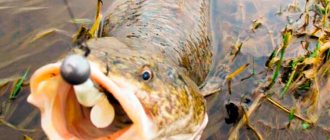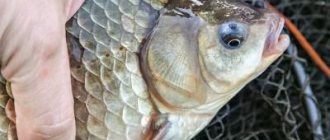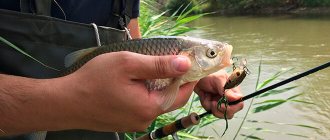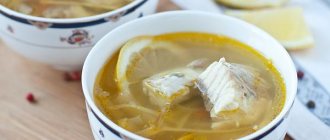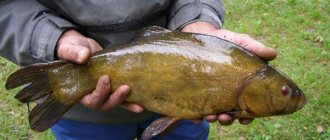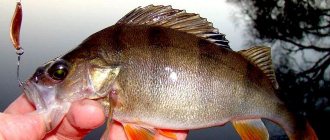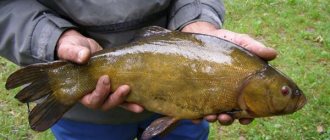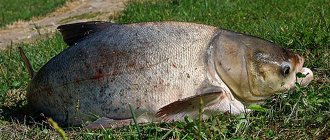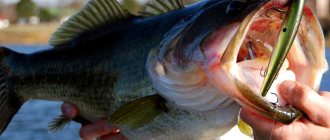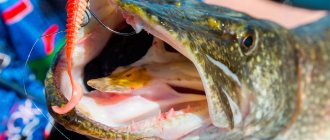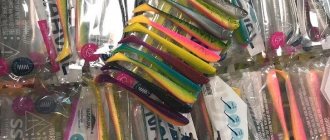Recipes for making boilies for carp
Now let's talk about the boilies themselves. They can be divided into two types: “store-bought” and “homemade”.
- To describe the process of preparing boilies, we took a simple recipe for clarity.
- In a coffee grinder, grind an equal amount of bird food with corn grits or semolina.
- The sheer amount of both components should be 45% of the total mass of the mixture itself.
- Add soy flour in a ratio of 45% of the total mass of the mixture.
- Now add 5% bone and fish meal each. This is the main composition of the dry ingredients.
- Flavor the mixture with sunflower oil, at the rate of 10 ml per 1 kg of mixture.
- Add five teaspoons of garlic, cinnamon and cumin for flavoring.
- Now that the dry mixture is ready, you need to calculate the number of eggs.
- For every 100 g you should take 1 raw egg.
- Beat the eggs into our mixture and knead the dough.
- Roll the resulting dough into balls and drop them into boiling water.
As soon as our boilies float to the surface, they should be caught with a slotted spoon and sent to dry for several days.
Other recipes for the main mixture are also used; below we present them as a percentage of the main mass:
Recipe No. 1
- 25% – semolina,
- 20% – soy flour,
- 15% – corn flour,
- 10% – casein,
- 10% – ground hemp,
- 10% – ground peas,
- 10% – milk powder.
Recipe No. 2
- 40% – ground birdseed,
- 30% – soy flour,
- 10% – ground peanuts,
- 10% – wheat flour,
- 10% – starch.
You can also use food flavorings that smell like banana, apple or pear. They can be bought in candy stores. You can make your own fish-scented flavoring by grinding shrimp or crab shells, or use fishmeal. Boilies are painted using food coloring; the color is selected experimentally, depending on the reservoir.
Finally, we’ll tell you about another means of catching carp with boilies – PVA bags. Many will immediately ask – what is this? Below we will tell you what they are and why they are used in carp fishing.
Self-production
Making boilies yourself is not a very difficult task for experienced carp fishermen. But if there is uncertainty about what culinary preferences the carp have and what they bite on in a certain area, then it is better to purchase ready-made boilies.
In fishing stores there is a huge selection of them in colors, sizes, smells, etc. Well, if you simply don’t have the desire or time to prepare complementary foods, then it’s naturally better to buy them. Moreover, purchased balls always show excellent results.
And yet, the advantage of homemade boilies is that the angler always knows what they contain and can independently choose the ideal recipe.
The cooking process is divided into several stages:
- Preparing and rolling out the dough.
- Modeling small pieces and giving them the appropriate shape.
- The finished balls can be stored in the refrigerator or immediately sent to boiling water for cooking.
As a rule, after boiling, the balls are considered ready for carp bait.
Recipe No. 1:
- wheat or corn flour – 250 g;
- bone or fish meal – 250 g;
- rye bran – 150 g;
- raw eggs – 6-8 pcs;
- cake – 150 g;
- baby food or milk powder – 100 g;
- salt – 70 g;
All dry ingredients should be in powder form. They should be mixed with eggs and kneaded into a dough. After. The dough is rolled into a sausage and cut into pieces from which balls are formed.
The finished balls are dried for 3 hours and boiled. After this, they should dry for 12-15 hours. This process allows you to prepare sinking boilies at home.
To get floating balls, instead of boiling them, dry them in the microwave until the moisture evaporates from them.
Recipe No. 2:
- soy flour – 200 g;
- compound feed – 200 g;
- wheat flour – 50 g;
- potato starch – 50 g;
- peanuts – 25 g;
- hemp seeds – 15 g;
- salt – 35 g;
The balls are prepared according to the previous method.
These recipes are the simplest and most effective. You can always add something of your own and complicate the recipe. It is recommended to add various flavors and food colorings to the mixture.
Where to look for fish
Carp is found in reservoirs, lakes and rivers. Does not like fast currents, prefers to stay in quiet areas where there is either very little current or no current at all. The fish prefers to swim on a somewhat silted, hard bottom. In general, the carp is quite tenacious and is able to adapt well even in muddy and dirty waters. That is, this fish does not die immediately if the reservoir is polluted. And if pollution occurs gradually, then the fish will certainly get used to the changes in living conditions and survive. Since carp is a relative of carp, their favorite habitats are similar. Ideal places are those where there is both food and shelter. What places should an angler start fishing first when fishing for carp in the summer? We start with snags in the reservoir, deep-water holes and their outlets, flooded vegetation, sharp river turns where there is often a change in depth, and steep banks. In the summer, carp will often sit in the depths during the daytime, so depressions in the bottom relief are another important fishing target.
IMPORTANT! The presence of deep areas will be indicated by the reverse current.
In the morning and evening hours, as well as at night, carp often swims to the shore and swarms in the coastal vegetation
You should not look for fish in areas with sandy and rocky bottoms; it is better to pay attention to silty and clayey bottoms. In summer, carp can be found at a depth of 3.5 to 6 meters - this is during the day
When the water cools down a little, he gets out closer to the shore. Catching carp with a float rod in the summer is carried out exclusively from the bottom. Often this large fish, like other representatives of large fish, reveals its presence with powerful splashes and splashes. It will not be difficult for an attentive fisherman to visually detect such a place.
It is important to remember that carp is a schooling fish, which means that every day it wanders along the same underwater paths - trails. If a fisherman manages to discover this route, he will be provided with a catch for the whole summer
It’s not easy to do this alone, so you’ll have to collect information bit by bit from thematic forums and experienced local fishermen. The flock swims along the path, skipping unpromising places and lingering where food is regularly found, there is shelter and a comfortable depth. Carp loves consistency and rarely changes its favorite eating places. The catchability of such places will certainly help increase the bait. The fisherman selects several promising places that the flock visits, and purposefully begins to throw food into them at the same time over the course of several days. It would be nice to discover a place that other fishermen do not know about. Then the entire catch will fall only into your hands.
IMPORTANT! They feed and catch fish with the same food.
So, if the fish are fed with corn and peas, then fishing for carp in the summer should be done with baits made of peas and corn. Over time, the fish will get used to the taste, color and aroma of the food and will swallow it on the hook without any fear.
Nozzle for catching carp
Now let’s talk about what to put on the selected hook in order to make catching carp a success. The baits for catching carp are very diverse; you need to understand what the carp likes best on a particular body of water.
Catching carp with boilies
If you have to fish in a place where the current speed is moderate, you can take boilies - balls with an aromatic mixture that attract prey, and at the same time allow you to cut off all the little things. Only large fish with a strong mouth can swallow a boilie. So if it starts to bite on the boilie, it means that a really respectable individual is hooked. True, this bait is not very typical either in appearance or taste for the natural diet of carp, so you will have to spend quite a lot of bait on complementary feeding. But when the carp tastes this treat, he will take it very willingly. One of the most popular compositions for boilies for carp is “Birdfood”: a mixture of crushed bird food with dough and sunflower oil; or "Meat-Spice": with the addition of bone meal, eggs, butter and vanilla.
Catching carp with a toothless bait
On the Volga and Don, fishermen often bait their hooks with toothless clams. The main disadvantage of this attachment for catching carp is that it does not fit well and periodically the tackle needs to be removed from the water to make sure that everything is in order with the bait and that it has not been knocked down by small fish. Note: in order for the mollusk to stay on the hook a little more firmly, its flesh should be dried for several minutes in the sun. And if your plans are to catch fish weighing about 10 kg, then it is better to bait two toothless hooks at once, so catching carp is guaranteed to take place.
Catching carp with boiled potatoes
Another option for baits for catching carp, especially popular in the Urals, is boiled potatoes. To make such bait, they take cubes cut from large tubers or small things from a new harvest, which gardeners usually call “peas” and throw them away. Potatoes are boiled in highly salted water, which is then immediately drained. After this, the tubers are filled with cold water and immediately drained again. Repeat this operation until the potatoes have cooled down. The cooled potatoes are cut into slices 10-15 mm in size, and the bait for catching carp is ready.
Catching carp with a worm and fry
Very traditional baits for carp are worms and fry. But here, again, there is a risk of suffering from small things - roaches and bream will quickly knock the worm off the hook and will not allow the carp to even smell the meat. But if you fish directly in pits at great depths, where small fish don’t even go, the usefulness of such a bait increases significantly.
Catching carp with cake
And finally, about another very popular attachment for catching carp, and at the same time about a unique way of equipping the tackle. In the south of Russia and Ukraine, carp is accustomed to such a delicacy as cake. This can be explained simply - sunflowers grow in large numbers in those parts and their seeds often end up in the water. Therefore, local fishermen have been fishing with this type of bait for a long time. The cake is pressed into small briquettes and, using rubber bands, is firmly pressed against a special lead plate, similar in size to the briquette. This plate is attached to the end of the main fishing line, and from the other edge several leashes with hooks are attached to it. Moreover, the hooks in this case should be stuck into the cake plate. The advantage of this bait is that it consists of food that is natural for the carp, and when used, protection from small things is fully guaranteed - it won’t even fit into its mouth.
Read Fishing for Bearing Gas
Equipment and nozzle
pop-up equipment
Fishing with boilies involves the use of the following types of equipment:
- Pop-up method - attach a lead pellet close to the hook. The hook is equipped with a foam ball. The ability to float depends on the length of the monofilament, from the location of the leash to the location of the pellet with which you can adjust the length.
- The main method of catching carp is to firmly secure the sinker. Thanks to such equipment, the fish, grabbing the bait and pulling it with it, independently hooks itself. The weight of the sinker directly depends on the fishing location, the current and the length of the casts. Boilies (size 24-25) are attached to a hook and closed with a plastic stopper.
Installation of blind-type equipment:
- The end of the main line is equipped with a loop necessary for attaching to the rope at the end of the tackle. The fishing line is cut to the required length with a margin of 30-40 cm.
- The float with cambrics is attached to the fishing line.
- The fishing line is equipped with a set of sinkers of the required weight so that only the float antenna protrudes above the surface of the water. To keep the rod as comfortable and controllable as possible, it is necessary to make the length of the equipment (with a leash) 40-50 cm shorter than the spinning rod.
- A float and cambrics with which it is attached are put on the fishing line.
- At the end of the fishing line we make a small loop to attach the leash (the loop-to-loop method is suitable).
- The equipment is screwed onto the reel.
equipment “Method”
Boilies are very delicate in structure and when baited on a large diameter wire, they can simply break or develop a crack, which, when cast, will increase and fall into pieces upon impact with the water.
That is why it is necessary to place the ball on the hook extremely carefully.
The hair type of attachment is the main method used to secure the ball to the hook. The bait is attached to a kind of hair a little lower. When the fish begins to swallow, the ball quickly falls onto the hook.
hair attachment
We carry out installation according to the following scheme:
- At the end of the monofilament after securing the hooks, measure 4 cm.
- Make the loop needed for the fastener.
- The base of the hook is equipped with a tube that will allow the hair to pass along the other side (from the bend).
- The boyle is put on the hair and secured with a fastener through a loop, which prevents it from falling off.
Effective baiting of the place
If fishing is planned for 2-3 days, then you need to feed the fish in small portions and add more throughout the day. This will keep the carp interested. The fish will remain in the feeding area until it has eaten everything completely or is spooked by something.
Find out how to catch carp with boilies.
When fishing for one day, you should pour out a large portion at once so that it spreads like a spot on the water, and then add more bait as needed. It is better to introduce food 4-6 hours before casting the fishing rod. When using flavorings and attractants, so that the taste and smell do not become boring to the fish, they should be changed periodically.
So, before you go fishing for carp with a fishing rod, you should familiarize yourself with the features and recommendations for catching it, and also stock up on the right bait. You can purchase ready-made complementary foods in a specialized store or make it yourself.
Features of hair fishing technique
Typical mistakes made by inexperienced fishermen when fishing with hairline are the following:
mismatch between the sizes of the hook, hair and bait, which reduces the percentage of bites. Experience suggests that a distance of 0.5–1 cm must be maintained from the tip to the nearest element of the equipment; Incorrect hair length, which reduces the number of self-cuts, increases pull-outs, and reduces the effectiveness of cutting
Focus on the given standards for the first time; experiments with length are possible in wild reservoirs and in paid areas, where the number of carp is large and the likelihood of it being bitten is high; inattention to corrosion of metal elements of tackle, which spoils the hair equipment upon contact and leads to breakages of the leader when fishing. Monitor the condition of the gear and re-tie the equipment regularly.
Important! The loops connected for corn and for boilies must correspond to the diameter of the nozzle and differ in size.
Advice from experienced carp fishermen, in addition to practical benefits, can bring you good luck:
- The sinker for hairline mounting should be heavy enough and hold well at the bottom. Sufficient weight for a muddy bottom is 28 g, for a hard bottom - 56–84 g. If there is a current, use a weight that will be sufficient to hold the equipment in a certain area.
- It’s worth trying to catch carp and carp using several gears at the same time, this will significantly increase the likelihood of a good catch.
- Hooking when using hair is not a necessary action, especially when the feeder does not slide, but is firmly mounted. After all, the first time the carp tries to spit out the boilie, the hook will stick into it. But if you are a beginner, and therefore doubt the correct installation of the equipment, hook each time to be sure, after waiting a little, this will protect you from leaving the fish.
The versatility of the hair rig will lead to the maximum number of trophies with a minimum of effort. And knowledge of the basics of equipment and interest in the effectiveness of combinations leaves a wide field for your own experiments, increasing experience, excitement and success in fishing.
Equipment for fishing with boilies
For fishing with boilies, several types of equipment are mainly used.
- Paternoster
- the simplest feeder equipment that can also be used when fishing for active carp. - The method is
a feeder into which the food is pressed with a special press, and once at the bottom the food slowly becomes soggy and crumbles, exposing the boilie and hook that are in it. - Pop-up - looks the same as the “Method”, but with the difference that a lead pellet is attached a short distance from the hook, and a foam ball is attached to the hook. The ascent height is the length of the line from the leader to the shot, which can be adjusted by moving the shot itself along the line.
- Equipment with PVA package. Described at the end of the article. PVA is the material into which boilies or pellets are poured. This material dissolves quite quickly when it gets into the water, leaving a feeding spot with the hook and bait at one point.
Hair installation - a method of attaching a boilie to a hook
To attach the boilie to the tackle, the so-called “hair rig” is used.
Its essence is that the hook remains open for hooking, and the boilie itself is fixed lower, on the so-called “hair”. The fish sucks in the boilie and also pulls the hook into its mouth along with it. Installed as follows:
- On the remainder of the fishing line after attaching the hook, 4 centimeters are measured.
- A loop is made for the retainer.
- A tube is placed on the base of the hook so that the “hair” runs along the side opposite the bend of the hook itself.
- The boyle is threaded into the hair and secured with a clip through a loop so that it does not fly back.
Equipment for fishing for carp
Boilies are primarily used on hair rigs. It allows you to position the nozzle at some distance from the hook. Use a leash about 10 cm long. To ensure high-quality self-hooking when biting, use a heavy sinker. Some fishermen use a feeder, which acts as an additional bait when fishing for carp. A carp hook No. 6 is suitable here. The recommended length of the entire equipment is about 40 cm. The equipment is used in still water and in currents.
Boilies can have different smells
What kind of boilies should be used for carp?
The size of the boilies is determined by the size of the expected catch. To eliminate the possibility of small fish biting, the balls are made with a diameter of two or more centimeters. They will allow you to become the owner of a large specimen.
The preferences of carp are influenced by many factors:
- weather;
- season;
- water temperature;
- period of preparation for hibernation;
- preparation for throwing caviar.
Catching carp with boilies
To become the owner of a trophy carp, you will have to try
Everything is important here:
First, decide on the type of boilies. If the bottom is muddy, use a floating bait. In summer, prepare it from plant ingredients
In winter, add fishmeal and other animal ingredients.
By offering baits with different scents, you will determine which bait to use to catch carp in a particular body of water. Pay attention to the bait. Many people believe that the best bait is a handful of maggots
But experienced fishermen feed with boilies themselves. An expensive, but quite effective option will definitely please you. Nozzle quality. If you are unable to make high-quality boilies, it is better to use store-bought ones.
Animal baits for carp
Boilies are not the only type of bait for carp. Under certain circumstances, fish prefer baits of animal origin:
- Maggots are among the most common baits when fishing for many types of fish. Fly larvae give good results. Growing them yourself is not difficult. But it is much easier to purchase them;
- Larger worms are selected. They will allow you to hope for a good catch. Crawlers, earthworms and dung worms are suitable here;
- The cockchafer appears in the last month of spring. It is placed in the chest area. Tear off the wings first;
- shellfish meat. Mollusks are natural inhabitants of water bodies. Habitual food is a real delicacy for carp and other fish species. Free it from the shell and cut it into several pieces. The pieces are put on a hook.
Due to the fact that the described fish species is considered omnivorous, bait can be made from various ingredients
Plant baits for carp
Plant baits in summer give positive results:
- dough. Its preparation begins with kneading the flour. To increase the attractiveness of the bait, butter, sugar, berries, eggs and various flavors are added;
- bread. Its soft part is used when fishing for crucian carp. But add vegetable oil, flour, boiled potatoes and fruit flavors. You will get an excellent bait for carp;
- porridge. Mash the cooked millet. To prevent the mixture from crumbling, place it in the oven. Then the porridge is cut into cubes of suitable sizes;
- corn and peas are classic baits. They are soaked in water and cooked until they have a soft texture. There are recipes where the attachments are infused for about a month. During this period, the peas soak, acquiring suitable softness. The canned product also shows good results. In some situations, carp prefers peas and corn from a can;
- potato. Choose a variety that doesn't cook well. To obtain better firmness, potatoes are boiled with their skins on. Balls resembling boilies are cut from boiled tubers.
Using berries when fishing for carp
Beginner fishermen use exclusively classic baits. But under certain circumstances, fish react to various berries. In spring, use raspberries, cherries, and cherries. In the fall, offer the fish grapes and other berries. The fish will not pass by the fruit bait. The berries have a natural, attractive aroma. There is no need for additional use of flavorings here.
Using vegetable baits when fishing for carp
Dough
Many anglers use dough when fishing. The basis of this bait is various flours, mixed to a dough-like state. The simplest recipe consists of wheat flour and sunflower oil. In order for the carp to become interested in such bait, you should add a little sugar, eggs and any berries to the main ingredients.
Bread
As a rule, bread crumb is used without additives or with the addition of various oils, potatoes or flour. Suitable balls are made from the ingredients mixed together and then placed on a hook.
Porridge
Carp prefers millet porridge. It should be cooked well, kneaded thoroughly and put in the oven. After this, the porridge is taken out to cool. This porridge is well cut into cubes of suitable size. It all depends on the size of the hook.
Peas and corn
Peas and corn are also popular with anglers. To prepare peas, they are soaked for 24 hours in water and soda, after which they are boiled in bags for 20-60 minutes. It becomes very soft to put on the hook. Old corn is also infused in water for 2-3 days, after which it is boiled until tender. Very often, fishermen use fermented corn. To get it, you need to take a vessel, pour corn into it and fill it with water. It is left in this form for at least a week, or even more. In this case, the container must be tightly closed. Experienced fishermen age the corn for almost a month and then use it.
Alternatively, you can use a canned product. As a rule, these are green peas or corn. Sometimes the carp is more interested in canned products. But when purchasing, there is a risk of purchasing a low-quality product in the sense that it may either not be whole or be too small in size.
Potato
It can also be effective when catching carp, but for this you need to take dense potatoes that do not boil soft. To prevent this from happening, it is better to cook it in the peel. For fishing, you can select potatoes with a diameter of up to 2 cm. If you prepare it correctly, you get a kind of boilie. If larger potatoes are used, then after cooking they are cut into several pieces.
Berries
Carp will not refuse the following berries:
- grape;
- plum;
- currant;
- cherry or sweet cherry;
- Rowan;
- raspberries.
They are placed on the very tip of the hook.
Fishing tactics depending on the gear used
Boilies are used with different gear. They are most often used when fishing with bottom and float rods, feeders, and springs. In each case, it is necessary to use special tactics. If at the time of the invention of boilies they were attached exclusively to a hook, today there are many other methods of attachment, for example, on a hair rig. This method is very convenient when catching shy crucian carp that does not like the taste of metal.
The main subtlety of fishing is that boilies are placed not on a hook, but on a leash, 2-3 cm away from the metal. In this way, you can hang 2 balls at the same time. Before going fishing, you should look at the calendar and find out in which months the crucian carp bite occurs. The peak activity of this fish occurs in June – August. After winter, the bite begins in April. It ends in October. In winter, you shouldn’t count on catching crucian carp.
Donka
The bottom fishing rod is used in reservoirs where there is a strong current, in deep places. Before starting fishing, it is recommended to feed the fish. For complementary feeding, you should use the same boilies as for bait. Casting should be done using a spinning rod with a high-quality reel.
Feeder
Feeder works well with boilies. You should choose gear with a rod having a length of 3 m. The fishing line should be hung with a diameter of 0.25 mm. The reel must be used with an inertia-free operating principle.
Read: Catching chub on a donk (feeder)
Float rod
This is the most common option for catching crucian carp. The most convenient and successful rod for such fishing is one with a length of 5 m. The recommended weight of the float is 7–8 g. It is advisable to select a sliding option. To catch crucian carp with a float rod, it is better not to let it out of your hands. The fact is that the bite in this case can be characterized by suddenness and sharpness.
Spring
Boilies also work well when fishing with a spring. In this case, you should use a floating type of bait. A sinker should be selected weighing 0.5 g. This is the weight that will allow you to throw the bait to the desired depth.
Did you know? The most ancient remains of fish hooks, made from shells of sea mollusks, were found in 2021 on the island. Okinawa (Japan). According to scientists, they were made 23 thousand years ago.
So, how to plant them correctly?
So, how do the boilie-to-hook attachments differ, and what is the most important thing a beginner should know?
This bait itself is designed in such a way that carp, which calmly sucks on any bulky food, cannot do the same with it. Therefore, it should be secured in the appropriate way. Initially, it was strung on hooks so that the sting was not visible behind the main body, but fishing in this way did not bring good enough results, so alternative ways of attaching the latter to boilies were invented. When looking at boilies, many do not even suspect the wide variety of installation methods, and that how to set the bait, how to tie knots and how to generally tie the hook to the fishing line greatly depends on the type of reservoir and the type of fish you are hunting for. One of the most popular methods for catching carp and bream can be called "hair".
In this case, the boilie is installed not on the hook itself, but near the lead outlet, which is located nearby. When boilies are used for carp in this way, the chances that the fish will be hooked on its own due to the swallowed hook increase significantly, and you can only rely on correctly secured gear. Depending on what size hook and size of boilie you use, the chance of that the tackle will still spin due to a sharp jerk from the fish.
In general, this method is suitable for most beginners; doing this with your own hands is as easy as shelling pears. We select the required hook size for the depth, tie it, preferably tie a sea knot, and now everything is attached and set, and the beginner will only have a pleasant experience from such fishing and quite massive carp if you choose the right hook.
Catching fish using this method is much easier, the main thing is to make sure that you managed to secure everything well so that it does not fall off at the last moment. After all, it all depends on how to tie the hook and how the boilie is attached.
- drowning;
- medium buoyancy - suitable for any body of water;
- floating on the surface.
To successfully fish on any type of reservoir and with different types of fish nutrition, a fisherman must be able to set boilies in different ways. The type of fastening may depend on several factors:
- type of reservoir;
- fish feeding horizon;
- fish activity;
- type of nozzle used.
A silicone tube 1–1.5 cm long placed on the eye of the hook improves the grip of installation
A hard bait can be attached to a hook in several ways. In the most common version, the “hair” loop is passed through a through hole in the nozzle and then fixed with a stopper. This method is the most universal and allows you to fish with baits of various sizes and any buoyancy.
To attach the bait in this way you will need:
- insert the needle into the hole of the bait;
- hook the pre-formed loop with the needle beard;
- pull the loop through the body of the hard bait;
- secure the end of the loop in the center of the stopper;
- holding the stopper along the edges with your fingers, pull the leash.
The next mounting option is ideal for beginner fishermen who have not had time to acquire a specialized tool. For this method, you need to make a shallow cut around the circumference of the nozzle ball. The cutting depth should be about 1–2 mm. Next to the hook, not an ordinary loop is formed, but a noose loop, which is inserted into the cut and tightened tightly.
Another method involves inserting a swivel into a round nozzle. Before driving the swivel into the boilie, you need to drill a hole in the bait and insert a silicone casing of the appropriate size into it. The swivel is inserted into the cambric only halfway. The free ring of the swivel is put on the hook and secured with a small rubber stopper. This method of attachment is quite reliable and allows you to perform power casts. It is most often used for fishing from the bottom on a slowly dissolving bait.
Fishing with floating pop-up baits involves the use of a fastening element such as a rubber ring. In this case, the fisherman will not have to tie complex equipment. To fix the nozzle, just put a rubber ring of the required diameter on it and hook the hook onto it.
The size of the hook in a boilie rig should always be slightly smaller than the size of the bait used
Mini boilies are equipped with a thread, which makes the installation process very simple. To attach a mini boilie, just hook the hook onto the thread
It is important for the angler to remember that placing a hard bait on a hook should be done with great care. Beginner fishermen are often in a hurry when performing this procedure, which often leads to injury.
Fishing tackle
The classic boilie tackle is a feeder rod. The bait is ideal for bottom fishing using methods such as carp fishing, where reinforced carp feeder rods with powerful spinning reels equipped with braided lines are used. In addition to carp feeder gear, you can fish with boilies using bottom gear assembled on a spinning rod, the so-called zakidushka, and with a corded rubber bottom.
Under certain conditions, and often these are convenient approaches to the habitats of carp on boats, fishermen even use fly-float tackle. Fishing with a Bolognese rod or match rod using aromatic balls can be widely used to catch medium-sized carp. If fishing with bottom gear ensures self-hooking of fish, then float equipment will require fishing skills from the fisherman himself.
Features of choosing bait and bait for carp
The choice of bait is primarily based on the time of year, what period of the day the fish are caught, and also what the weather is like outside the window:
- Fishing in spring. During this period, the carp actively bites on animal bait, for example, a worm, maggot. In late spring and early summer, vegetable and artificial baits are used.
- During the cold season, carp moves a lot and tries to gain weight before the cold weather, so during this period their appetite increases. During this period, bait of animal origin should be used.
Depending on the weather:
- Cloudy, cold, and also very hot days are designed for plant-type bait. At this time, the fish is particularly lethargic, moves weakly and is at the bottom.
- When the weather is clear, worms and maggots are used.
Carp are most actively caught in the spring, until the end of June. The fish are actively feeding throughout the fall, so this period is also considered one of the best for fishing.
Optimal time of day for fishing:
- At dawn;
- After sunset;
- In some situations you can fish at night.
It should be remembered that on particularly hot days, there is no point in going out fishing during the day.
Sooner or later, many fishermen go fishing for carp. Such a catch is often very weighty; one individual can reach 12 kg. In addition to their heavy weight, these fish are distinguished by their intelligence and skill in moving away from the fishing rod.
Let's celebrate! That is why, having caught a carp, a fisherman can be considered a real professional. In the hunt for such a catch, bait plays a major role. Carp are carnivores, but their diet includes different foods. There are some features of catching carp depending on the time of year and weather that you should be aware of.
Buy or make it yourself?
Often, an angler is faced with a choice: buy a ready-made mixture and not worry about it, or make bait for carp at home. Let's look at the pros and cons of both options.
Shop
The advantages of purchased bait include the following factors:
- balanced in nutritional composition and flavoring;
- the ability to choose depending on fishing conditions;
- can be used as a base mixture;
- No time is wasted on selecting ingredients and culinary research.
At the same time, there are also negative aspects of branded baits:
- high cost of truly working mixtures;
- Often there is abundant aromatization, which has a bad effect on the bite in cool water;
- There are reservoirs where the fish are accustomed to a certain composition of bait, and consider everything new to be foreign and not suitable.
Advice! When going to a new body of water, don’t be lazy to find out from local fishermen information about the taste preferences of the local carp.
Homemade
There is no doubt that the best argument in favor of homemade bait is its low cost. Sometimes even waste from our usual food successfully attracts carp to the fishing point. It can be:
- various cereals;
- pasta;
- mashed potatoes;
- pea mash.
Salapinka, in its essence, is an ordinary porridge for catching carp fish in the current.
In addition, you can make bait from various food products purchased at markets or supermarkets. When composing different mixtures, it is necessary to take into account the time of year and water temperature, as well as local fishing conditions.
The disadvantages of homemade baits include:
- production time costs;
- difficulty in dosing aromatization;
- possible absence of particularly valuable bait components.
How to make boilies for carp at home
Preparing truly catchy boilies is accessible to any angler who is a little familiar with the kitchen. Making bait does not require any special mental or material costs.
General recipe for boilies for carp
- First, the dough is mixed from different types of flour, cereals and other products.
- Then the dough is rolled out into sausages, which are cut into pieces of certain sizes.
- Balls are made from them.
- Depending on the desired type of boilie, the balls are cooked in the microwave, boiled or frozen.
- Balls that have been boiled in boiling water must be thoroughly dried. Sometimes it takes several days to dry.
One of the recipes for preparing boilies for carp fishing, tested by our anglers, is as follows.
- Mix a glass of corn and soy flour, two glasses of semolina and a glass of powdered milk.
- Everything is thoroughly mixed.
- Add 10 fresh eggs, vegetable oil (2-3 tablespoons), dye (1 teaspoon) and a little flavoring (by eye) to the homogeneous mixture.
- Everything is thoroughly mixed again, and balls are made from the resulting dough.
Professional carp fishing, secrets of all fishing methods and successful rig solutions in an extensive guide to carp fishing.
Guide to fishing for carp on a feeder - choosing a place, bait and lures.
Groundbaits and bait
To catch carp, you will also need to choose the right bait and groundbait. For this purpose, you can use boilies. These are dough balls based on various aromatic mixtures. Fish of considerable size bite on this bait. You can make this kind of food yourself or buy it at a fishing store. It is better to choose options with a fishy smell. For fishing in the Don and Volga rivers, the toothless mollusk is usually used. In order for it to stay on the hook better, it should first be dried in the sun, literally for about 10 minutes.
We advise you to learn how to prepare potatoes for catching carp.
The disadvantage of this bait is the need to periodically remove the tackle from the water to make sure that the mollusk is not knocked down by small fish. Boiled potatoes have worked well. This bait is especially popular in the Urals. It is prepared from cubes cut from large potatoes or using small whole specimens, which are usually thrown away after harvesting. The raw materials are first boiled in highly salted water.
Then it is drained and the product is immersed in cold liquid. The manipulation is carried out several times until the potatoes cool completely. Immediately after this, the raw materials are divided into 10 mm fragments and placed on hooks. For fishing in pits where fry do not swim, traditional bait in the form of a worm and small fish is well suited. Naturally, the above-described makushatnik is suitable for carp. When the bait is selected, care should be taken to have complementary food similar in composition to it.
Important! When casting the equipment, do not throw it over yourself, otherwise there is a high risk of injury. It is better to carry out a pendulum movement with your hand from bottom to front.. It is worth mentioning right away that it will take quite a long time to lure fish to a certain point
Sometimes you have to spend from 3 days to a week so that the carp gets used to the presence of food at a specific point and does not swim away to another place. For luring, you should get a spring or mesh feeder. The necessary raw materials (makuha, boilies, etc.) are placed in it, and then thrown at a distance of 30–50 m from the coastline
It’s worth mentioning right away that luring fish to a certain point will take quite a long time. Sometimes you have to spend from 3 days to a week so that the carp gets used to the presence of food at a specific point and does not swim away to another place. For luring, you should get a spring or mesh feeder. The necessary raw materials (makuha, boilies, etc.) are placed in it, and then thrown at a distance of 30–50 m from the coastline.
Methods of catching carp - carp
In the first months of life, carp fry feed on phytoplankton and invertebrate organisms, then they switch to larger and more varied foods - being an omnivorous species, they eat almost everything edible: plants, seeds, berries, root vegetables, worms, insects, mollusks, fish eggs, juvenile fish, crayfish, frogs and leeches. Distinguished by its increased gluttony, it does not disdain even food products and waste from their production.
The fishing method and equipment for carp fishing largely depend on the time of year and the location of the fisherman. For example, from a boat, where there is no need to cast the tackle far, it can be caught with an onboard fishing rod or a short spinning rod of an extra-heavy class, using both bottom and float equipment with a sliding float. Using equipment with a blind float attachment, you can catch carp either from a boat or from The shore will not work, since the limited depth and fishing distance will prevent this.
The type of reel for fishing tackle for carp does not really matter, the main thing is that it can accommodate the required footage of fishing line of the required caliber.
Read Fishing for crucian carp in autumn
Of the floatless gear for fishing carp in open water (from a boat), feeder or conventional bottom equipment based on the same extra-heavy spinning rod or onboard fishing rod is used. Stationary fishing is carried out with more serious match and carp rods, capable of providing a significant casting distance of equipment required for catching this fish from the shore.
It happens that the carp is very far away, and even special fishing rods do not allow you to get the equipment to the right place. This usually happens in reservoirs with a flat bottom topography, which significantly distances deep-water areas from the coastline, or where carp, under serious fishing pressure, stay at a considerable distance from the shore.
In such cases, carp anglers resort to the help of radio-controlled boats that deliver the equipment to the right place.
Regardless of the type of equipment, all its elements and fishing line must be strong - designed for a fish weight of at least 12-15 kg: the main fishing line is nylon monofilament no thinner than 0.5 mm, leashes - 0.35 mm, carp hooks 2-3 No. international numbering.
The lack of a special fishing rod should not prevent you from catching this wonderful fish. Without the opportunity to spend money on expensive fishing accessories, you can fish for carp at an average distance of 50-60 m, making do with a regular spinning rod or a telescope of appropriate power and an inexpensive inertial reel. To do this, you just need to find a suitable place with a steep bottom topography or introduce fish ahead of time. Many fishermen of the old generation successfully catch carp and other fish without a rod at all, casting their grandfather’s throws by hand.
Of course, there are items of fishing equipment that you cannot do without when fishing. For example, pulling a large carp out of the water without a landing net will not work. The trophy, delivered to the shore and seemingly no longer resisting, will certainly jerk with all its might and break the fishing line as soon as it feels a touch on it or on itself.
Fishing with boilies
Knowledgeable fishermen have repeatedly been convinced of the caution and excellent vision of the carp.
This unpretentious fish is quite difficult to lure onto a hook, since thanks to its intelligence it senses danger. Carp prefers well-warmed water, so you can go hunting for it only if the temperature does not drop below 15 degrees. In such weather there is a good, stable bite.
After hooking, it is worth remembering that a cunning representative of cyprinids can offer very serious resistance. In order to be able to reduce the force of jerks, in no case should you loosen the fishing line too much. And of course, a good quality rod and reel is very important.
Determining the presence of carp in a reservoir is quite simple. You just need to take a closer look. It reveals itself by jumping in the shape of a candle from the surface of the water and making loud splashes when diving. Jumping occurs along the path of movement in search of food.
Hiding under water, the carp leaves bubbles on the surface of the water as it moves, and its feeding site can be seen with the naked eye. It is necessary to make casts to the feeding area.
Using PVA bags in which hooks and bait are placed
equipment with a PVA bag.
The entire circumference is filled with fine-grained bait, which vaguely resembles the natural food that fish are used to eating. The package contains materials that begin to dissolve after a short period of time. Fishermen equip bags with 2 methods: floating and submersible.
In the submersible form, gear with bait and a weight is placed inside. The bag is filled to the end with bait and tied, leaving the main line coming out from the central part of the PVA. After casting the tackle, the sinker begins to pull the bag to the bottom surface, and the air remaining in the bag, collected in the lower part, turns the container over, pushing out the leash and bait.
An appetizing bait with a hook is located just above the accumulated bait mixture.
Catching carp in summer - bait
Bait will help not only attract fish, but also keep it at the desired point. Of course, you can catch carp without feeding, but the efficiency of fishing and the volume of the catch will significantly increase if you use a fresh and high-quality mixture. Lure may interest fish that swims a few meters from the bait. If you do not use bait, the fish may swim past the bait without noticing it. But if the fish is already purposefully swimming towards the smell of complementary food to the fishing point, then here it will linger and begin to eat the food that happens to be nearby. Since carp is a fish with an inordinate appetite, you need to take more complementary food with you when fishing. You can use both store-bought mixtures and pellets, and complementary foods prepared at home. Carefully study the composition of purchased complementary foods, since not in every body of water they will show maximum effectiveness. But fresh homemade bait, prepared from ingredients regularly included by carp in its diet, gives powerful results. Let's talk about the two most striking homemade baits that fishermen use with might and main when fishing for carp in the summer.
Recipe first
The basis is boiled potatoes and boiled peas. Mix them together until smooth. Add corn and an ingredient that will also be used as bait on the hook. For example, if you catch a crawler, then you need to add a dozen or two chopped crawlers to the complementary food. It is better to introduce animal components of complementary foods directly on the pond immediately before fishing. Then the chopped crawlers will still actively flounder in the water, additionally teasing and attracting fish. Another advantage of this recipe is the powerful aroma that the bait will emit. A carp will definitely come to this smell if it happens to be somewhere nearby
It is important that complementary foods are not in the form of a homogeneous mush: it should also contain components of a large fraction - small pieces of potatoes, whole or half peas. If you turn everything into porridge, then such complementary foods will give nothing but smell
A fish that comes to the smell will simply discover that there is no food here and will swim away. That is why dimensional particles are also introduced into the complementary food, which will hold the carp at the point and smoothly lead it to the bait on the hook.
Recipe two
Here they take makukha and millet as a basis. Take a glass of millet for 2 glasses of water. Bring to a boil and cook over low heat. The millet will be ready as soon as all the water has boiled away
Here it is very important to monitor the cooking, periodically stirring the porridge so that it does not burn. The smell of burning can ruin all the food and scare away the fish
Then add flour to the porridge that has not yet cooled down (sprinkle it on the eye), bringing the mixture to the desired density. This base will give a powerful aroma. However, you should also worry about the nutritional content: add peas and corn. Other white fish - silver bream, roach and crucian carp - are also excellently caught with this bait, without adding peas and corn.
Equipment for fishing with boilies
When using boilies for catching carp, certain types of equipment are used:
- Paternoster is one of the simplest feeder equipment. This type of equipment is also used when fishing for carp.
- Equipment of the “method” type. The basis of such equipment is a sinker feeder called “method”, which is equipped with a mold for securing the bait to the feeder. Once in the water, the food gradually soaks and is distributed around the feeder. Before this, boilies with a hook are hidden in the food. After soaking, the boilies with the hook are exposed and become accessible to the fish.
- Pop - up is similar to the “method”, but differs in the presence of a lead pellet attached not far from the hook, and a foam ball is placed on the hook. The pellet can move along the leash, thereby adjusting the height of the hook's ascent. Many species of fish cannot take the bait from the bottom, so it must be raised.
- Use of PVA bags . Bait or boilies are placed in such bags, and when the PVA bag gets into the water it dissolves, creating a food spot.
Hair installation - a way to attach boilies to a hook
This method of attaching boilies is very effective. With this installation, the hook is always open, and the boilies are attached in close proximity to the hook, on the “hair”. The fish sucks in the food, as well as the boilies along with the hook.
Installation is carried out as follows:
- A hook is attached to the leash and 4 cm is measured from it.
- At this distance a loop for fastening is formed.
- A tube is placed on the shank of the hook and a “hair” is passed through this tube. It should come out of the tube on the opposite side of the hook point.
- The boyle is put on the “hair” and secured using a clamp and loop.
- The equipment is ready for use.
Choosing a spinning rod for fishing for carp
For fishing for carp, special carp spinning rods are selected. To make the right choice, you need to take into account certain nuances. Different rods are designed for different types of bait by weight. The main selection criteria relate to the strength, length and weight of the rod itself. This is actually called the spinning test and determines the casting distance. Such data can be found in the instructions for the gear, but they are not always reliable.
Did you know? The oldest tackle found by archaeologists is a hook, made, according to rough estimates, 42,000 years ago.
Taking this into account, you should independently test the spinning rod to understand whether it can withstand the weight of the bait and the pressure the fish will exert when trying to remove it from the water. First, it’s worth understanding the operating features of the fishing rod. The spinning rod is an elastic, springy device. In the initial stage of casting, under the influence of moderate load, its end is retracted back, and in the final stage - forward, giving the bait additional acceleration.
If the mass of the bait is very small, then the rod will not react properly. This means that the bait will not receive acceleration in the final phase, and accordingly the casting range will be low. If the mass of the bait, on the contrary, is too large, then the end of the device will react with a significant deflection back, but there will not be enough elasticity for the final acceleration phase. Accordingly, there will be no additional impulse, and the result will be a “failure” effect.
If you go beyond the test, the rod may break. This can happen not only with a bait that is too heavy, but also with a light one or without it at all. If the bait is small or absent, the fisherman has to make a sharper cast. Subsequently, the energy transferred to the bait is not consumed, but provokes the appearance of mechanical waves of elasticity in the rod, which leads to its destruction. To catch carp you will need a rod with a weight of 120–200 g.
Important! To hunt carp, stock up on a set of hooks with leashes. This will allow you to quickly and efficiently change gear in accordance with conditions or in case of breakdown
To verify the data declared by the manufacturer, you can independently carry out the following steps:
- Take several weights that differ in mass, but are similar in shape. Ideally these should be balls.
- Make a series of casts, applying a moderate load. In this case, when securing the load, the distance from the tulip to the weighting material should be minimal.
- Compare the results obtained by range. It is more convenient to measure parameters not in meters, but by the number of revolutions of the coil.
- The defining test units will be the results with the loads thrown the farthest.
Habitats of carp
These giants love huge water areas with smooth clay plateaus and depths of at least two meters. Such conditions are provided by large, slowly flowing rivers and flowing lakes. On the hard bottom, the fish rests and gains strength to enter feeding areas, which are bottom thickets and colonies of shells. Flocks do not disdain to stop in snags and among driftwood.
Despite their small size, the fish are quite shy and do not like noisy places. The giant does not stay near bridges and populated areas where human activity is active, preferring wild, deserted places. A definite parking point for the carp will be a section of a reservoir on the border of a current and a deep, quiet backwater, tightly closed from the shoreline by a wall of cattails or reeds. The fish overwinters in underwater pits, with depths of ten meters, becoming densely individual to individual, ceasing all activity.
